Spare parts by 3D printing
12 May 2021
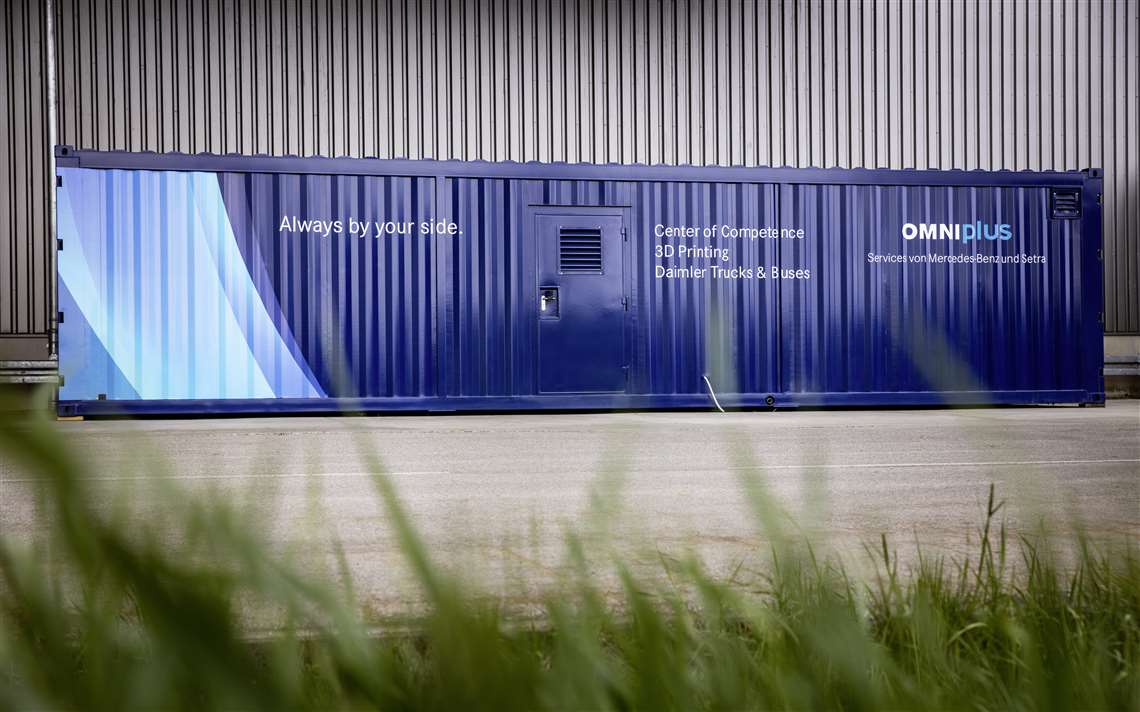 Daimler Buses and its service brand Omniplus have created a mobile printing center for the decentralized production of 3D printed spare parts to more quickly provide customers with spare parts.
Daimler Buses and its service brand Omniplus have created a mobile printing center for the decentralized production of 3D printed spare parts to more quickly provide customers with spare parts.
Since the dawn of additive manufacturing – better known as 3D printing – in the 1980s, it’s been suggested that the technology could potentially provide a whole new way of manufacturing components, vehicles and equipment.
Yet progress has not exactly been constant. Though there have been interesting glimpses – Project AME (Additive Manufactured Excavator) at ConExpo-Con/Agg 2017 highlighted a hydraulic excavator with a cab, boom and heat exchanger built by 3D printing – real commercial application has been rare.
Mercedes-Benz Trucks and Daimler Buses were among the first to bring the concept closer to the real world, as in 2016, the companies began offering series production parts using additive manufacturing.
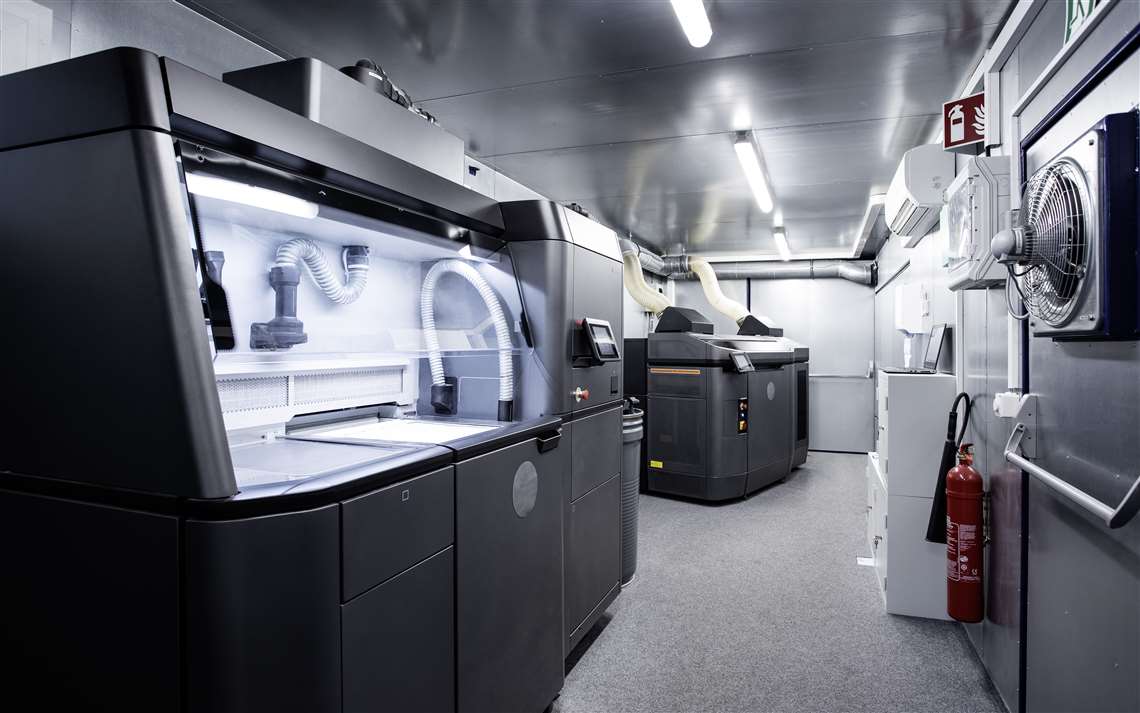 The mobile printing center is packaged within a container and includes all of the stations relevant to the production of spare parts using a 3D printer.
The mobile printing center is packaged within a container and includes all of the stations relevant to the production of spare parts using a 3D printer.
Now Daimler Buses and its service brand Omniplus have another interesting step, creating a mobile printing center for the decentralized production of 3D printed spare parts in order to more quickly provide bus customers with spare parts. The “mini factory” is packaged within a standard container and includes all of the stations relevant to the production of spare parts using a 3D printer in an area of only 36 m2 (387 sq. ft.)
The 12 x 3 m (39 x 9.8 ft.) container can be transported by truck to any location, Daimler said, and once there, only electricity and an internet connection are required for its operation.
Pilot project in Hamburg
The pilot container from Omniplus in Neu-Ulm will be in operation at the BusWorld Home (BWH) service center in Hamburg, Germany. As a result, the BWH service center that already offers a range of services for Mercedes-Benz and Setra buses will be able to quickly produce spare parts inhouse. Through the added painting expertise of BWH, spare parts can be
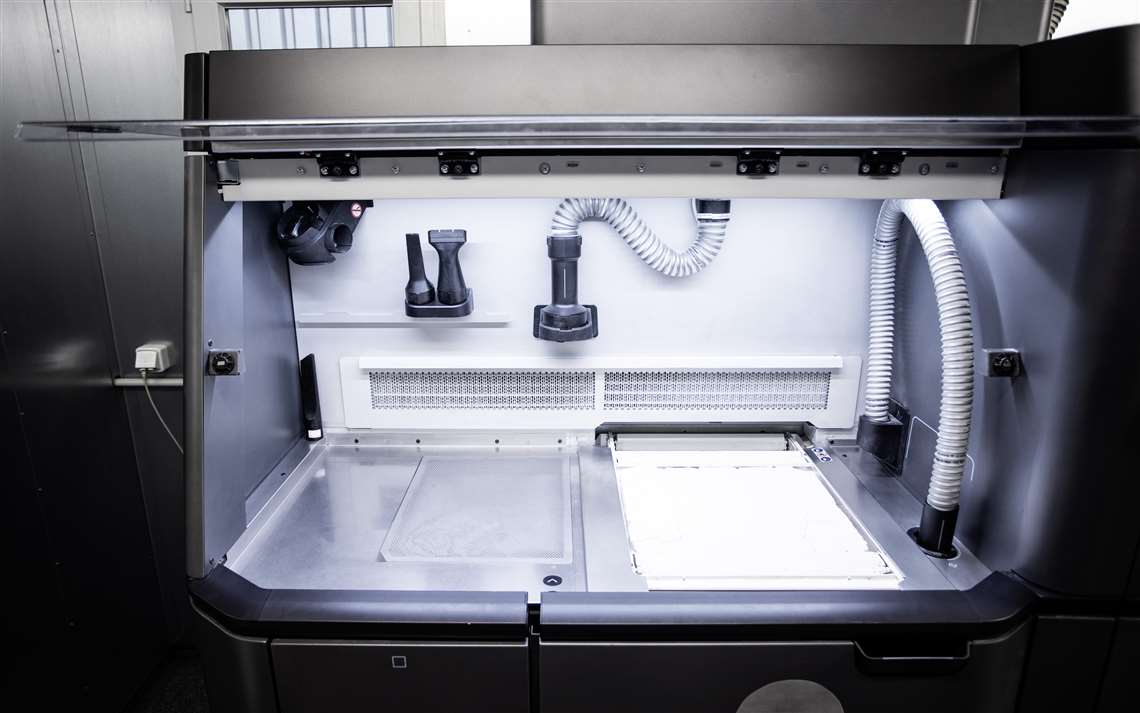 The required powder is prepared at a processing station where the 3D printed spare part is also freed from residue powder in a final step.
The required powder is prepared at a processing station where the 3D printed spare part is also freed from residue powder in a final step.
refined directly according to customer requirements, Daimler said. Daimler Buses is setting up an additional 3D production facility for spare parts at BWH Hamburg to go along with the internal industrial 3D printing center in parts production in Neu-Ulm.
“Thanks to the mobile 3D printing center, we can exploit the advantages of 3D printing to a greater extent and further increase the speed at which we supply spare parts,” said Bernd Mack, head of Customer Services & Parts at Daimler Buses. “Decentralized production of parts as required avoids warehousing costs and reduces transportation routes. Thus, 3D printing not only allows us to react fast, flexibly and economically to customer requirements but to also improve our ecological footprint for the production of spare parts.”
3D printing in tight quarters
The mobile container is equipped with a high-level industrial 3D printer which produces 3D printed products to the same quality as other genuine parts, Daimler said, making it the first manufacturer that can deliver series-production quality using a mobile solution. The 3D parts are additively manufactured using high-quality polyamide and meet the production
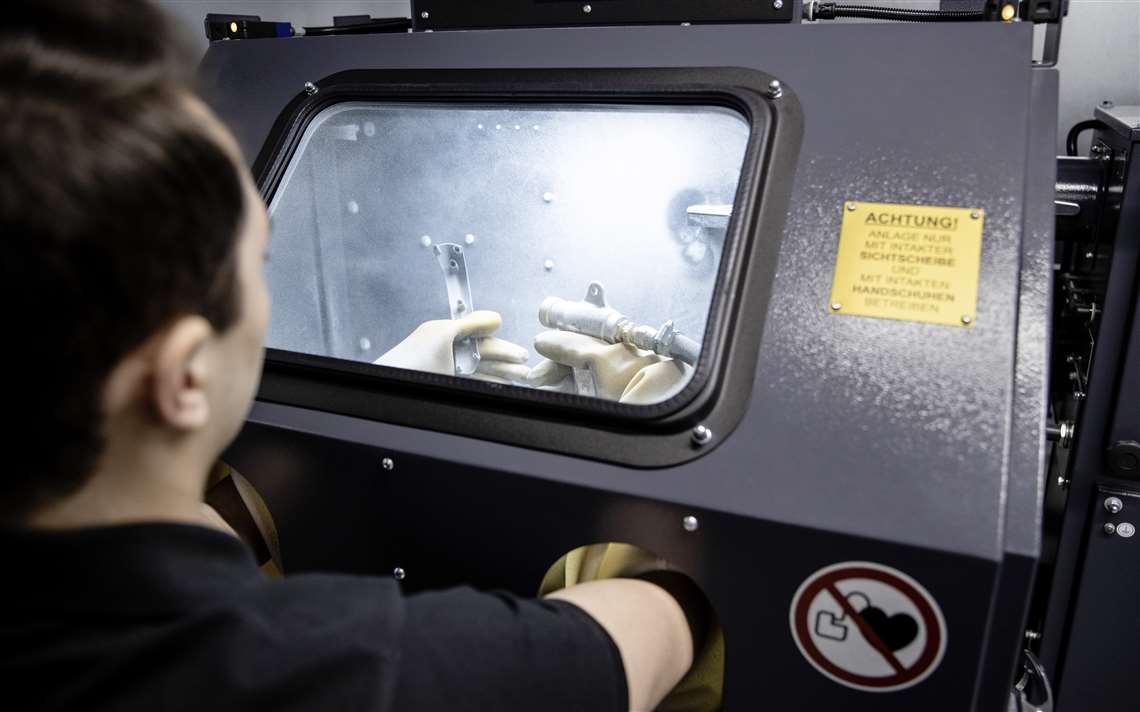 A blasting system, located in an adjacent room, smooths the surface of the component parts for a smoother finish.
A blasting system, located in an adjacent room, smooths the surface of the component parts for a smoother finish.
standards for injection-molding and deep drawn parts as stipulated by Daimler AG.
The 3D printing data is prepared at a CAD workstation prior to the printing process. The required powder is prepared at a processing station where the printed spare part is also freed from residue powder in a final step. A blasting system and an air compressor are located in an adjacent room and the blasting system is used to smooth the surface of the component parts for a perfect finish. The printed spare parts can also be painted in a limited range of colors, the company said.
Along with the compressor that provides compressed air, the container is also equipped with an industrial vacuum cleaner, an air filter and an air conditioning system.
From physical to digital warehousing
Using 3D printing, Daimler Buses said it can react fast and flexibly to urgent customer requirements. For example, when customers order rarely required parts or have special requests,
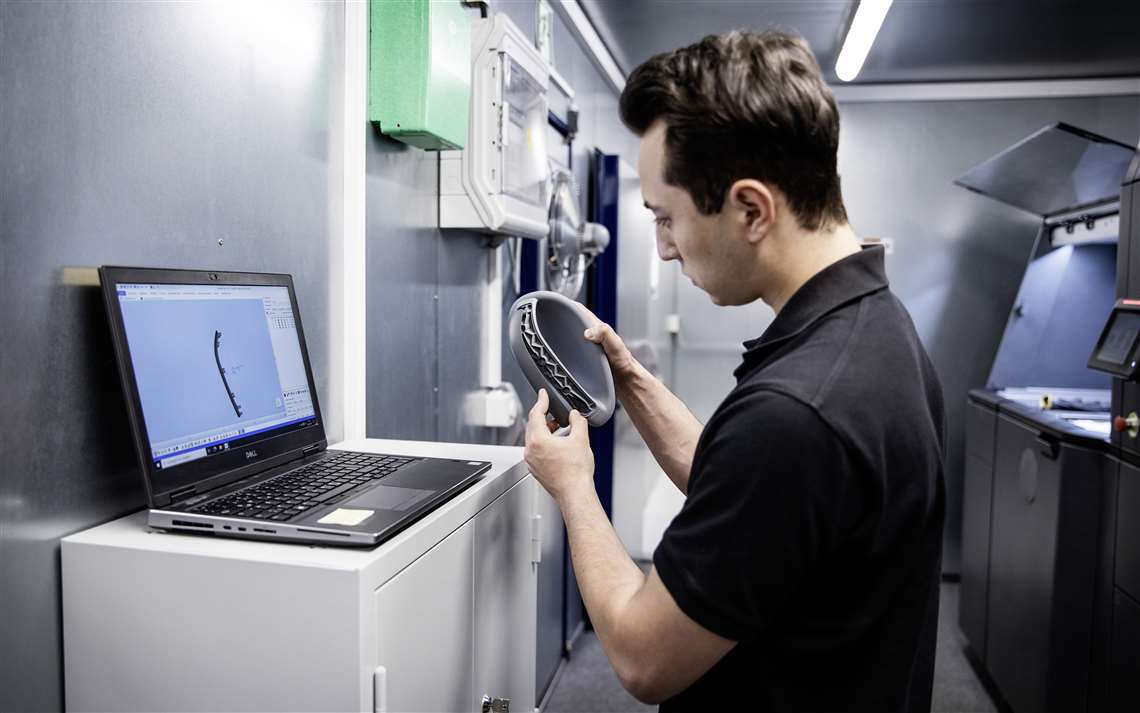 Using 3D printing,, Daimler Buses said it can react faster and more flexibly to urgent customer requirements, including for rarely requested or special parts.
Using 3D printing,, Daimler Buses said it can react faster and more flexibly to urgent customer requirements, including for rarely requested or special parts.
production and delivery of a 3D printed part takes only a few days instead of the several weeks it can take now, the company said.
Just under 40,000 bus spare parts are already 3D printable today, Daimler said. Ralf Anderhofstadt, head of the Center of Competence 3D-Printing at Daimler Buses and his team are currently focusing on around 7000 parts that are being successively digitized. Some of these are already available only as 3D printed spare parts after having undergone the relevant digitization steps, approval processes and numerous product tests and are stored in the “digital warehouse” together with the necessary printing information.
In a next step, Daimler Buses said it intends to further expand and decentralize the business model to enable customers to be able to purchase 3D printing licenses from the “commerce” section of the Omniplus On portal and have the corresponding parts produced in a 3D printing center certified by Daimler Buses.
STAY CONNECTED


Receive the information you need when you need it through our world-leading magazines, newsletters and daily briefings.



